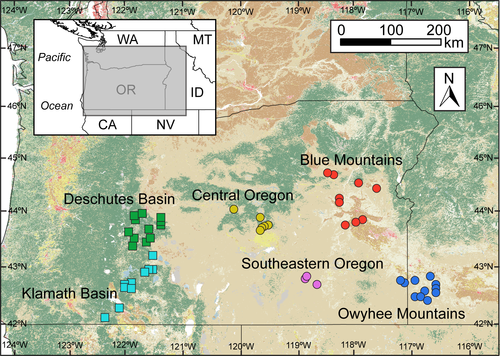Regional variation in drivers of connectivity for two frog species (Rana pretiosa and R. luteiventris) from the U.S. Pacific Northwest
Abstract/Summary
Comparative landscape genetics has uncovered high levels of variability in which landscape factors affect connectivity among species and regions. However, the relative importance of species traits vs. environmental variation for predicting landscape patterns of connectivity is unresolved. We provide a test with a landscape genetics study of two sister taxa of frogs, the Oregon spotted frog (Rana pretiosa) and the Columbia spotted frog (R. luteiventris) in Oregon and Idaho, USA. Rana pretiosa is relatively more dependent on moisture for dispersal than R. luteiventris, so if species traits influence connectivity, we predicted that connectivity among R. pretiosa populations would be more positively associated with moisture than R. luteiventris. However, if environmental differences are important drivers of gene flow, we predicted that connectivity would be more positively related to moisture in arid regions. We tested these predictions using eight microsatellite loci and gravity models in two R. pretiosa regions and four R. luteiventris regions (n = 1,168 frogs). In R. pretiosa, but not R. luteiventris, connectivity was positively related to mean annual precipitation, supporting our first prediction. In contrast, connectivity was not more positively related to moisture in more arid regions. Various temperature metrics were important predictors for both species and in all regions, but the directionality of their effects varied. Therefore, the pattern of variation in drivers of connectivity was consistent with predictions based on species traits rather than on environmental variation.
Publication details
| Published Date: | 2018-07-16 |
| Outlet/Publisher: | Molecular Ecology |
| Media Format: |
ARMI Organizational Units:
Pacific Northwest - BiologyTopics:
Quantitative DevelopmentsSpecies and their Ecology
Place Names:
OregonKeywords:
connectivitygene flow
genetics
movement

